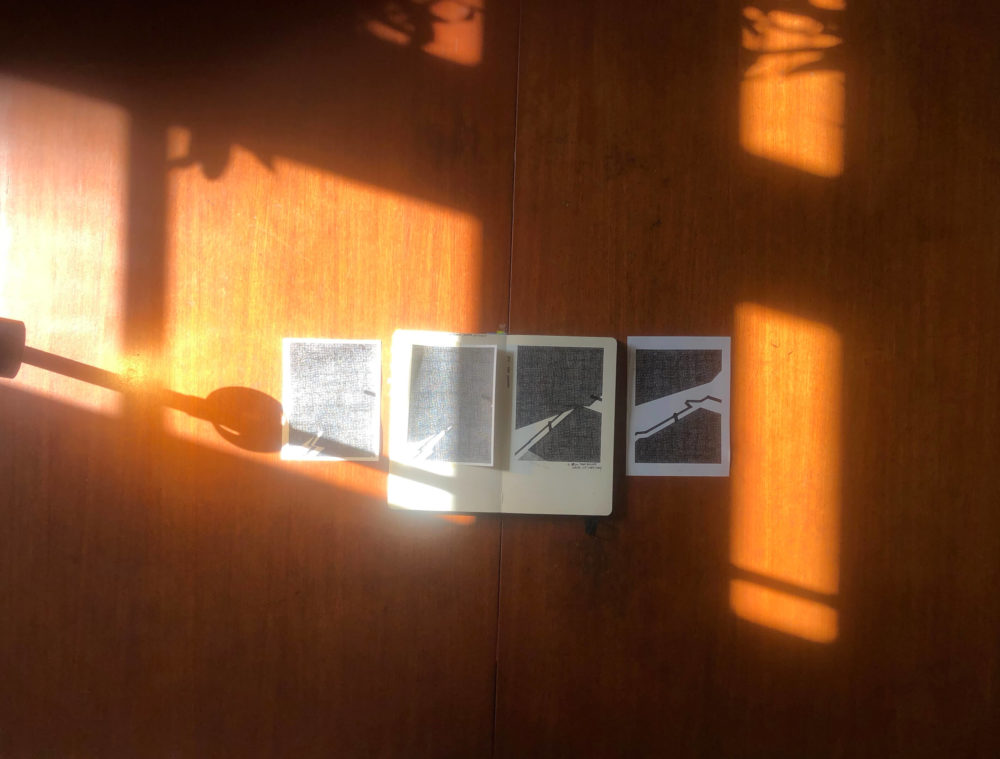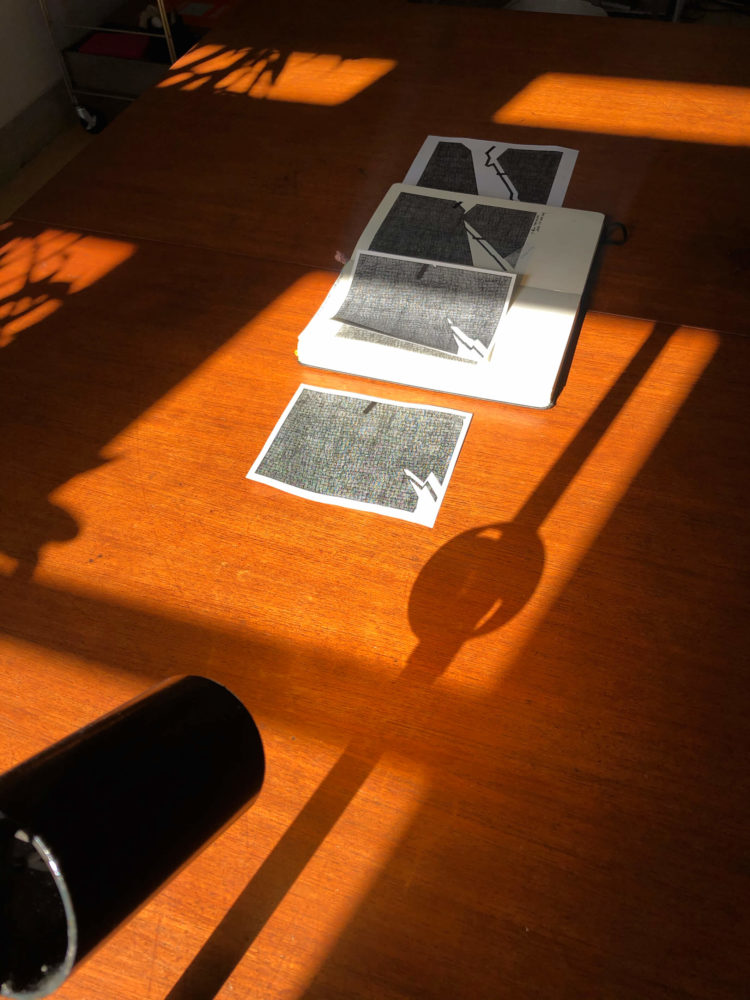ROOM 2 — Frames
Untitled, Vishwa Shroff
Blockout, William Hughes
Top: Domestic Outside, Veeranganakumari Solanki
Bottom: Domestic Light, Veeranganakumari Solanki
Unintentional Shrine No. 1, Laurie Nouchka
A snapshot – everyday surfaces, Gemma Dunford
What is a frame? Is it the boundary of a building, room, photograph, image, screen? The frame is often used by curators to create context as both a physical frame to boarder artworks but also to build a narrative around an exhibition. Here in Room 2 we are invited to explore various layers of framing by the artists to help us delve deeper into the domestic, light and shadow, and how a frame can contain information.
Shroff’s work discusses these various levels of framing in a simple step form of: the light that hits the table; the table as a frame for the works; the different pieces framed on their separate pages; and the photographic frame containing the images subject, “I place here 4 drawings of shadows that appear in one corner of the house, on to a table facing the window from which one can see the subject of the drawing. The image I have taken doesn’t permit this view, instead, the drawings are layered with shadows of the aforementioned window, making the drawings impossible to see until sundown within the image presented with the intention to question the absence of space to navigate around the object.” She further plays with the idea of ‘the frame’ by noting that we, the viewer, are unable to see beyond the frame or change our perspective of the works. Our gaze in contained within the light and shade (photography.)
However, there can be a simplicity to the curatorial frame. As with Solanki’s work Domestic Light we are asked to not over-analyse but simply enjoy the visuals we experience daily or purposefully to inspire us, “From the library shelf. I sometimes make my way into this room full of collected books. Every time I need something to respond to, to learn, to inspire, I find it in here. The text you see here is from a book on photography. Without listing details of the book (since this will divert into photography), what struck me here was the way in which light plays such an important role in our everyday. We often overanalyse the simplest situations only to realise that the everyday is what we already have around us and outside.“
Domestic spaces hold many memories, and are often decorated / curated to inspire us to remember and hold our personal archives, dreams, hopes, and momento’s as visual cues. As Dunford remarks, in this current time of Covid-19, we are looking at and for this more, for the safety, comfort and fun of another time, “As we enter week 8 of lockdown, I’m hyper-aware that our memories are mostly being created within our own homes. In my case, within the four walls of our ground floor flat, and the small garden out the back. This new series of imagery focuses on my fascination with the surfaces I see every day and the memories that become attached to them.” The Polaroid frames a happy memory that now sits in the place it once happened, we are invited to enter a rabbit hole and dive into the frame, in Room 2 into the artists memories and also our own.








